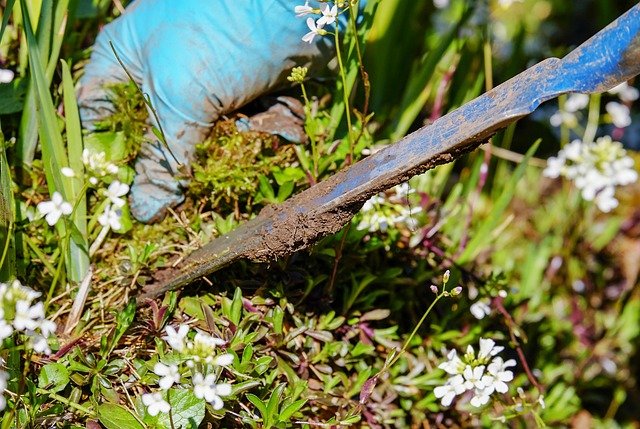Effective Weed Control: A Comprehensive Guide to Weed Removers
Weeds are the bane of every gardener's existence, competing with desired plants for nutrients, water, and sunlight. Fortunately, there are numerous weed removal methods available to help maintain a beautiful, weed-free garden or lawn. This article explores various weed control techniques, from manual removal to chemical solutions, and provides insights on choosing the right weed remover for your needs.

-
Crabgrass: This annual grass spreads quickly and can form thick mats in lawns.
-
Clover: While some consider clover beneficial, it can overtake lawns and gardens if left unchecked.
-
Bindweed: Also known as wild morning glory, bindweed has deep roots and twining vines that can choke other plants.
-
Chickweed: This low-growing weed thrives in moist, shaded areas and can spread rapidly.
Identifying the specific weeds in your garden will help you choose the most effective removal method.
What are the different methods of weed removal?
There are several approaches to weed removal, each with its own advantages and drawbacks:
-
Manual removal: This involves pulling weeds by hand or using tools like hoes and weeders. It’s environmentally friendly but can be time-consuming and labor-intensive.
-
Mulching: Applying a layer of organic or inorganic mulch can suppress weed growth by blocking sunlight and preventing seed germination.
-
Chemical herbicides: These products kill weeds through various mechanisms. They can be selective (targeting specific types of weeds) or non-selective (killing all plants they contact).
-
Natural herbicides: These are made from plant-based or other naturally occurring substances and are generally considered more environmentally friendly than synthetic chemicals.
-
Heat treatments: Methods like flame weeding use high temperatures to kill weeds by rupturing their cell walls.
-
Prevention: This includes practices like maintaining a healthy lawn, using weed barriers, and promptly removing weeds before they can spread.
How do chemical weed removers work?
Chemical weed removers, or herbicides, work in various ways to eliminate unwanted plants:
-
Contact herbicides: These kill only the plant parts they touch, making them effective for annual weeds but less so for perennials with extensive root systems.
-
Systemic herbicides: These are absorbed by the plant and transported throughout its structure, killing the entire plant, including the roots.
-
Pre-emergent herbicides: Applied to soil, these prevent weed seeds from germinating or emerging seedlings from establishing themselves.
-
Selective herbicides: These target specific types of plants, allowing you to kill weeds without harming desirable plants.
-
Non-selective herbicides: These kill all plants they come into contact with, so they must be used carefully to avoid damaging wanted vegetation.
When using chemical weed removers, always follow the manufacturer’s instructions and take necessary safety precautions.
What are some natural alternatives to chemical weed killers?
For those who prefer to avoid synthetic chemicals, several natural weed control methods are available:
-
Vinegar: Household vinegar can be effective against young weeds, while horticultural vinegar (with higher acetic acid content) is more potent but requires careful handling.
-
Boiling water: Pouring boiling water over weeds can kill them, especially effective on walkways and driveways.
-
Salt: While effective, salt should be used sparingly as it can damage soil health and prevent future plant growth.
-
Corn gluten meal: This natural pre-emergent herbicide prevents weed seeds from germinating but won’t affect established plants.
-
Essential oils: Some essential oils, like clove and citrus oils, have herbicidal properties when mixed with water and a surfactant.
-
Organic mulches: Materials like wood chips, straw, or leaves can suppress weed growth while improving soil health.
These natural methods may require more frequent application than chemical herbicides but are generally safer for the environment and beneficial insects.
How can proper lawn and garden maintenance prevent weed growth?
Prevention is often the best strategy for weed control. Here are some maintenance practices that can help keep weeds at bay:
-
Mowing at the proper height: Keeping grass at the right length (usually 2.5 to 3 inches) helps it outcompete weeds for resources.
-
Watering deeply but infrequently: This encourages deep root growth in desirable plants, making them more resilient against weed invasion.
-
Fertilizing appropriately: Well-fed lawns and gardens are better equipped to crowd out weeds.
-
Aerating and dethatching: These practices improve soil health and reduce opportunities for weeds to establish.
-
Using landscape fabric: In garden beds, this can prevent weeds from emerging while allowing water and nutrients to reach desirable plants.
-
Planting densely: Minimizing bare soil in gardens reduces the space available for weeds to grow.
-
Promptly removing weeds: Addressing weed problems early prevents them from spreading and becoming more challenging to control.
By implementing these practices, you can significantly reduce the need for weed removers and maintain a healthier, more attractive landscape.
In conclusion, effective weed control requires a multi-faceted approach. Whether you choose manual removal, chemical herbicides, natural alternatives, or preventive measures, consistency and persistence are key to maintaining a weed-free garden or lawn. By understanding the different types of weeds and removal methods available, you can develop a strategy that works best for your specific landscape needs while considering environmental impact and personal preferences.






